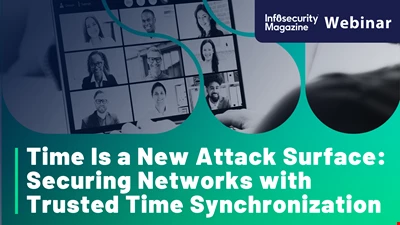Infosecurity News

GoBruteforcer Botnet Targets Linux Servers
The GoBruteforcer botnet has been observed targeting exposed Linux servers on services like FTP and MySQL

New Zero-Click Attack Lets ChatGPT User Steal Data
Researchers at Radware discovered new prompt injection attacks in ChatGPT agentic features

China-Linked UAT-7290 Targets Telecom Networks in South Asia
A long-term cyber-espionage campaign targeting South Asia's telecom firms has been linked to UAT-7290

Phishing Attacks Exploit Misconfigured Email Routing Settings to Target Microsoft 365 Users
Misconfigurations abused to make phishing emails look like they come from within the organization

Fifth of Breaches Take Two Weeks to Recover From
Absolute Security claims that full recovery from endpoint-related downtime can take up to a fortnight for most organizations

US To Leave Global Forum on Cyber Expertise
The Trump administration decided to leave 66 international organizations, including the GFCE and the European Centre of Excellence for Countering Hybrid Threats

Maximum Severity “Ni8mare” Bug Lets Hackers Hijack n8n Servers
A newly discovered vulnerability in authentication platform n8n could allow threat actors to take control of n8n servers

Versatile Malware Loader pkr_mtsi Delivers Diverse Payloads
Malicious Windows packer named pkr_mtsi used as a flexible malware loader in malvertising campaigns

Ghost Tap Malware Fuels Surge in Remote NFC Payment Fraud
New Android malware enables unauthorized tap-to-pay transactions without physical access to bank cards

China intensifies Cyber-Attacks on Taiwan as Energy Sector Sees Tenfold Spike
Taiwan recorded an average of 2.63 million cyber intrusion attempts to it critical infrastructure per day coming from China in 2025

Personal LLM Accounts Drive Shadow AI Data Leak Risks
Lack of visibility and governance around employees using generative AI is resulting in rise in data security risks

Hackers Claim to Disconnect Brightspeed Customers After Breach
A hacking collective claims it has disconnected customers of US ISP Brightspeed

MFA Failure Enables Infostealer Breach At 50 Enterprises
Threat actor “Zestix” was able to breach around 50 firms using infostealers because they lacked multi-factor authentication

Hospitality Sector Hit By PHALT#BLYX ClickFix Malware Campaign
Multi-stage malware campaign targets hospitality organizations using social engineering and abuse of MSBuild.exe

High-Severity Flaw in Open WebUI Affects AI Connections
A high-severity security flaw in Open WebUI Direct Connections risks account takeover and server compromises

UK Launches New Cyber Unit to Bolster Defences Against Cyber Threats
UK government’s new Cyber Action plan looks to provide more ‘hands-on’ support for protecting against and responding to security incidents

Jaguar Land Rover's Q3 Sales Crash Amid Cyber-Attack Fallout
JLR’s wholesale sales plunged 43% and retail drops 25% in the third quarter of 2025 following the 2025 cyber-attack

Ilya Lichtenstein Released Early After Bitfinex Hack Conviction
Ilya Lichtenstein, convicted for the 2016 Bitfinex hack, has been released early from prison to home confinement

VVS Stealer Uses Advanced Obfuscation to Target Discord Users
A new Python-based malware called VVS stealer has been identified, targeting Discord users with stealthy techniques to steal data

New Zealand Orders Review of Manage My Health Breach Affecting 100,000+ Patients
A breach affecting Manage My Health could have exposed sensitive data for up to 120,000 New Zealand patients



